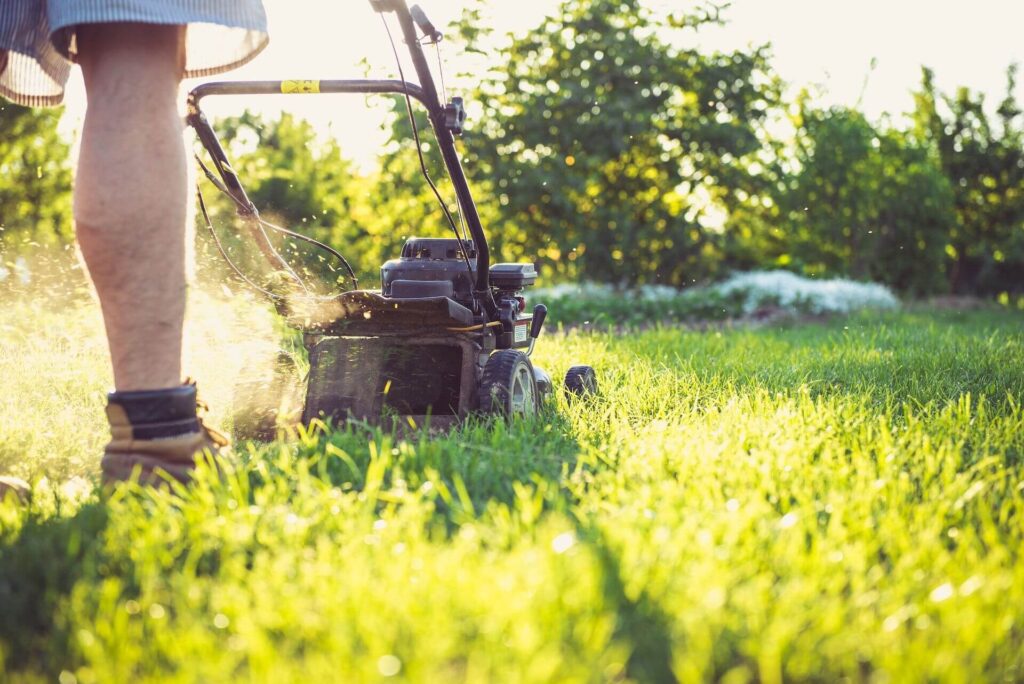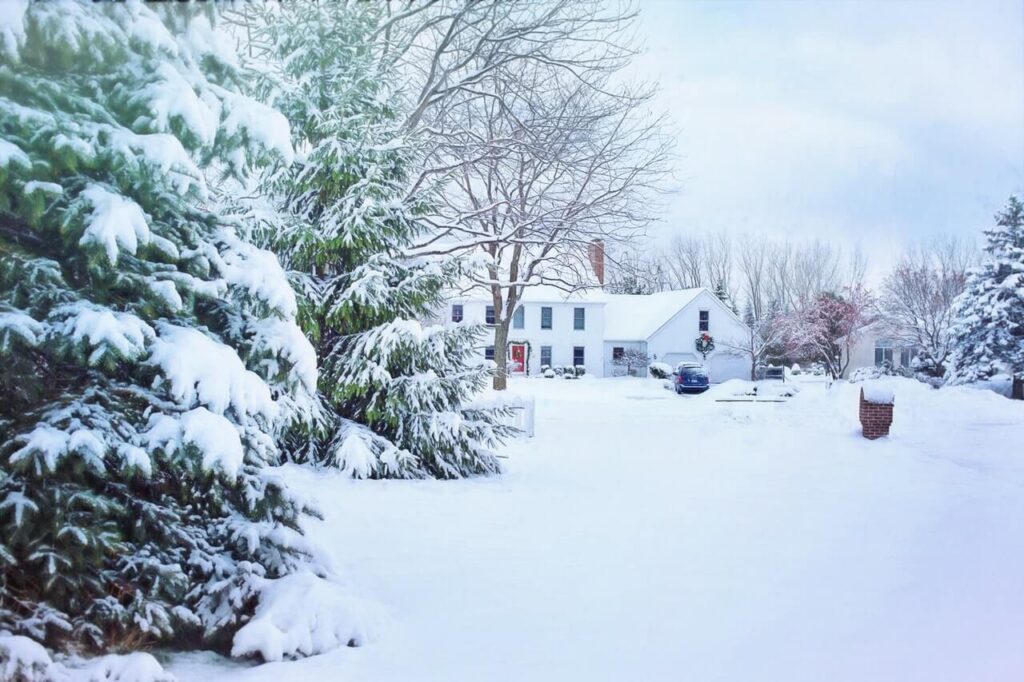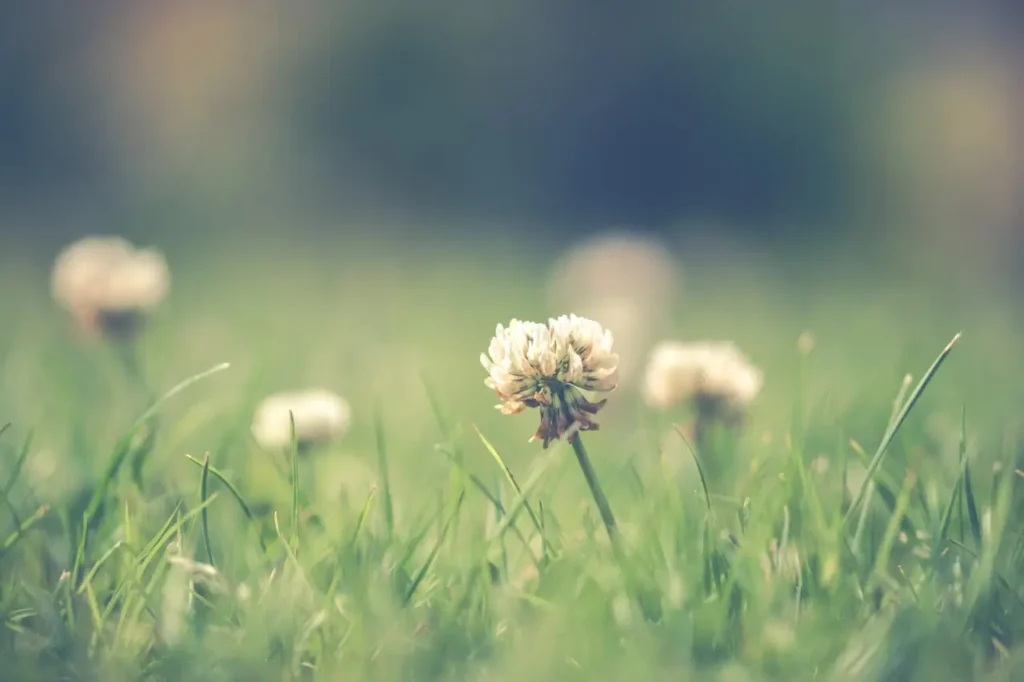Is this your first fall as a Colorado Springs homeowner? Whether you’re ready to winterize your lawn for the first time or simply need a fall lawn care refresher for the home you’ve lived in for years, these essential lawn care basics will help you transition your lawn from the summer season to winter.
Fall Lawn Care Tips for Colorado Springs Homeowners
For Colorado Springs homeowners, fall is a crucial time to help your lawn recover from the high summer heat and prepare it for a cold, snowy winter ahead. By practicing these fall lawn care tips, you can ensure your lawn comes in green and lush next spring.
Rake and Remove Leaves
Should you let fallen leaves be or rake them up? Fall leaves make great compost material, but don’t let them compost away directly on your lawn. Leaves can smother your grass if left unattended, which can lead to dead patches and disease.
Rake your leaves off your lawn and deposit them into a compost bin or pile. You can mix nitrogen into the bin as you add the leaves; they’re high in carbon but low in nitrogen. To get the right mix of carbon and nitrogen, you can add one part dry leaves to two parts fresh grass clippings. Add some moisture to your compost leaves, and you should have fall-leaf compost ready for your garden by late spring.
Continue Mowing
Continue mowing your Colorado Springs lawn as the weather progresses from summer to fall. Grass height and mowing frequency are as important in the fall as in the summer.
Ideal mowing height:
- Bluegrass, ryegrass, fescue, and wheatgrass should be a height of 2 to 3 inches.
- Buffalo grass can be mowed to 2 to 3 inches but also do well unmowed.
How often should you mow your lawn in the fall? Mow your lawn often enough so that you’re never taking off more than 1/3 of the grass height during any single mowing. If you’re trying to maintain a grass height of 2 inches, you’ll want to mow when your grass is three inches tall.
You can let grass clippings compost directly on the lawn, or you can mix them with your fall leaves in your compost pile.

Reduce Watering Frequency
Your lawn may grow a little slower in the fall, but that doesn’t mean you should stop watering it completely. Your Colorado Springs lawn is still growing; turfgrasses form side shoots and rhizomes in the fall, which make your turf more dense and help it recover from summer stress. Watering in the fall can also help discourage winter mites and optimize your fall fertilization for better results.
On average, October is the wettest month in Colorado Springs, so you’ll have some rainfall to help water your lawn. If you see signs of dehydration, such as footprints remaining on the lawn after an hour, give your turf the water it needs. Water one to two times a week, only when air and soil temperatures exceed 40 degrees F with no snow cover. Water no later than mid-day so the water can soak into the soil before possible freezing temperatures at night.
Fall Aeration
Aeration can loosen compacted soil, improve air circulation, and enhance water absorption. The best time to aerate your Colorado Springs lawn is in the fall or spring, when the practice of pulling cores (plugs of soil) out of the lawn can help move more air, water, and nutrients into the root zone.
Aeration can be done once annually for a lawn that gets moderate use; however, lawns that see heavy traffic or look thin, patchy, and bare could benefit from a fall aeration and spring aeration.
Schedule your Colorado Springs seasonal lawn aeration services with JRick Lawn and Tree.
Fall Lawn Fertilization
Fertilizing in the fall helps strengthen grass to withstand the upcoming winter season, helping it grow thicker and healthier in the spring. For Colorado Springs homeowners, the best time of year to fertilize your cool-season turf types, like Kentucky bluegrass, is between September and November.
Fall fertilization will provide your turf with a healthier root system. It will encourage dense, green spring lawns without excessive top growth.
Fertilize with nitrogen while your grass is still green. Moist soil helps nitrogen dissolve, so apply fertilizer within a day of watering. Avoid adding fertilizer to grass that is dry, dormant (brown), or cold.
Weed Control
Keep weeds under control so they don’t compete with your grass. Fall season brings some weed control considerations, especially if you’re using post-emergent herbicides for broadleaf weed control. The ideal temperature for applying most post-emergent herbicides is between 65° F and 85° F. You’ll also want to avoid applying post-emergent herbicides within 24 hours of watering or expected rain, which can be difficult during Colorado’s rainiest month (October).
Hand-pulling or mowing may be the best methods for weed control in the fall if the weather is too cool or wet for proper herbicide use.
Seeding and Repair
Lastly, fall is a perfect time for overseeding and repairing dead patches of lawn before winter weather and snow sets in. Overseeding can be done at the same time as aerating to help fill in dead spots and add more color and diversity to your lawn in the spring.
Colorado Springs Lawn Winterization Tips
Winter lawn care starts in the fall as you prepare your turf for the cold, snowy season ahead.
The unique climate of Colorado Springs can bring dry air, little soil moisture, low precipitation, and fluctuating temperatures to the region, and supplemental watering may be needed if there is no snow fall to provide moisture.

Winter Water Considerations
Watering guidelines change with the seasons. To prevent freezing winter damage, your irrigation system should be winterized (blown out ). Use a hose to water once per month if there is low snowfall or days above 50°F when there is no snow cover or wind. Water no later than mid-day so it can soak in before temperatures drop below freezing at night.
Snow Considerations
Piles of snow can damage your lawn, stressing the grass and increasing the risk of fungal infections. If you notice uneven piles of snow on your lawn, breaking it up and spreading it out evenly can help encourage snowmelt. Avoid using rock salt on your lawn, which can damage your turf.
Get Expert Fall and Winter Lawn Care From JRick Lawn and Tree
The right fall lawn care and winter lawn care can help ensure your grass grows back green, lush, and dense in the spring. Fall is the ideal time to repair, aerate, seed, fertilize, and take any additional steps needed to strengthen your grass before the winter season. The lawn care professionals at JRick Lawn and Tree help Colorado Springs homeowners with the tasks of fall lawn care, so you can get the expert care you need and be certain your lawn will be vibrant and healthy when winter comes to an end.
Get expert help with your Colorado Springs lawn from JRick Lawn and Tree today.
Other Great Articles about Lawn Care Trips

Understanding How Pre-Emergent & Post-Emergent Weed Control Products Work
Weeds can be the bane of any homeowner’s lawn, especially in central Colorado. If you’re battling these pesky intruders, understanding the differences between the various weed control products available can be daunting. That’s why we’re going to explain the two main types of weed management products, pre-emergent and post-emergent herbicides. As you read on, you’ll…

The Complete Guide to Lawn Mowing + Lawn Mowing Tips for Colorado Springs Homeowners
Mowing your Colorado Springs lawn is more than a weekend chore; it’s essential to keeping your green space healthy and attractive. You may think the only purpose of mowing is to keep your grass from getting unruly. However, your mowing practice can actually help increase your lawn’s density and encourage deep root growth, two factors…

Demystifying Noxious Weeds: What Colorado Landowners Need to Know About Identification and Removal
Some weeds are a nuisance: they invade lawns and garden beds, fighting your plants and flowers for resources and interfering with the beauty of your yard. Other weeds are far more insidious, threatening the ecological health of Colorado. These weeds are known as noxious weeds. Noxious weeds, often deceptive in their appearance, threaten the balance…
